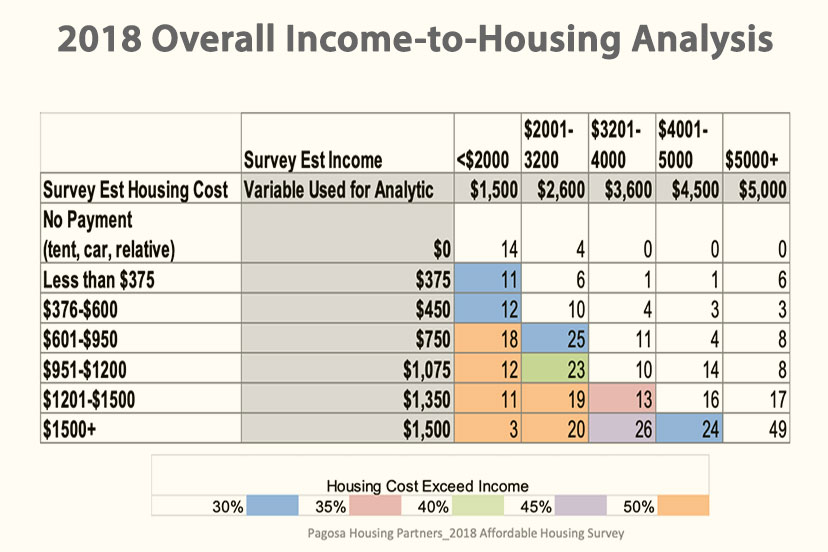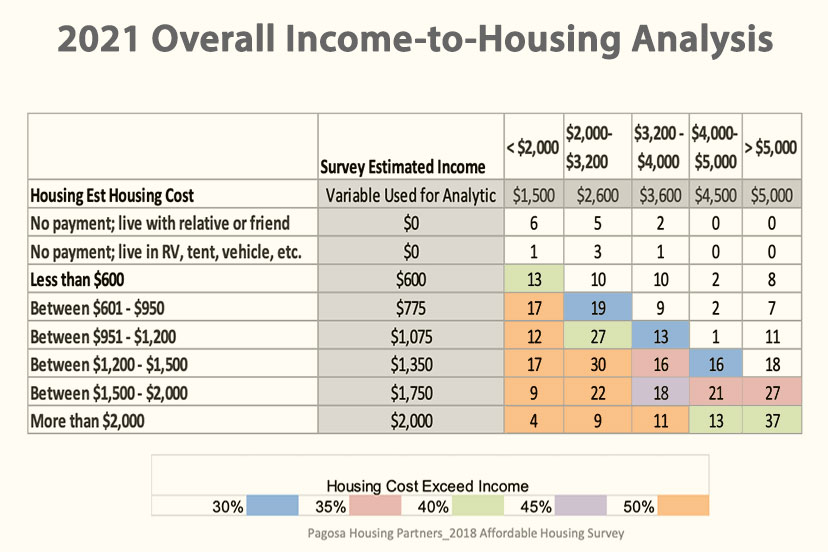Putting fresh restrictions on the use of private property — as the Pagosa Springs Town Council is proposing to do with Ordinance 958, limiting vacation rentals in residential-zoned districts — inevitably brings up the question of timing.
How much warning should a government board provide, for this type of change, considering Pagosa’s hot real estate market?
Two weeks? Two months?
During previous Town Council discussions, Council member Nicole Pitcher — who works in the real estate industry and is herself a vacation rental owner — had urged the Council to put vacation rental restrictions in place, but to have those restrictions go into effect on January 1, 2022. Numerous real estate sales in progress this summer, she explained, where buyers are planning to apply for Town-issued vacation rental permits following the purchase.
Ordinance 958 would essentially make it impossible to obtain a new license in residential neighborhoods within the town limits, although all previously-issued licenses would remain valid.
During the discussion of the ordinance on August 19, Town Council member Maddie Bergon appeared concerned about waiting until January 2022 for the ordinance to become effective.
“My thought is — this is going into effect in January, right? January 1 is what we stated?”
Town Manager Andrea Phillips clarified the ordinance wording.
“No, we actually did change that in the proposed ordinance, so that [the new limits] would take effect upon second reading. The reason for that — and obviously, you guys can change it — if you wait to have it to go into effect, there is going to be a run on licenses…”
Ms. Bergon:
“That was my concern. and why I was bringing up the potential, because I didn’t want the next three months to be a mad grab for licenses, especially in [areas already densely populated with vacation rentals.] So thank you for that clarification.”
The second reading will presumably happen on September 7. We might also presume that it will be approved on second reading.
Ms. Phillips:
“And if I may… we’ve heard from some realtors that, you know, people are in the process of purchasing a home with the expectation that they’re going to be able to do a short-term rental on it. However, it is not [currently] a ‘use by right’ except in [commercial zones]. In the areas where it requires a Conditional Use Permit, it doesn’t seem — to me — a good idea to assume you’re going to get a Conditional Use Permit and STR license. So, it’s really not a guarantee.
“That’s something for you guys to keep in mind. If it goes into effect at second reading, that’s only giving people, what, two weeks, I guess? So I don’t know if you want to consider some kind of leeway…”
Ms. Bergon:
“I would like, maybe, a little bit of leeway in there, because people who are… I don’t know…”
Council member Mat deGraaf offered, concisely, his perspective.
“I am happy with the ordinance going into effect on second reading.”
Town Attorney Clay Buchner then explained that he’d spoken with several attorneys from communities that had already put vacation rental limitations in place. How much lead time should a municipality allow, for this type of code change?
“The consensus was that, no matter when you do it, there’s going to be people ‘in the hopper’. As soon as you put any kind of restrictions in place… somebody is going to be unhappy. There’s no way to do this, without somebody saying, ‘Well, I bought my property, so…” There’s always going to be a kind of ‘leap frog’ effect.
“It’s something to consider, but just know, that anytime you consider any sort of new restrictions, there is always going to be somebody in the middle, whether you do it a year from now, or tomorrow, or four months from now; it’s always going to be a valid point that people are going to be affected by this.”
Ms. Bergon:
“Yes, and I guess I would say… we’ve been talking about this for long enough; I would really hope realtors are having those discussions with their clients. That some changes were coming, to the current code.”
Indeed, it would appear that changes are coming, to the current code. As mentioned yesterday in Part One, the first reading of Ordinance 958 — significantly limiting new vacation rental licenses within the town limits — passed unanimously on Thursday.
A few years too late, perhaps?
In Part One, we touched on a presentation, at the same August 19 Town Council meeting, by Joanne Whitney, secretary of the non-profit Pagosa Housing Partners (PHP), which included an analysis of survey data from 553 local residents. The survey had asked 23 questions related to housing needs, and Ms. Whitney had taken some of that data and performed an analysis similar to the analysis she’d performed in 2018, from a similar PHP survey.
Here’s one of the data charts from the 2018 survey.
In this chart, the survey respondents who appear to be paying in excess of 30% of their household income for housing costs are shown in various colors — 30% being a standard measure used by Colorado Housing and Finance Authority, HUD, and other housing agencies to delineate “cost burdened” families. The families or individuals who are paying more than 50% of their household income on housing — the people who are “severely cost burdened” — are shown in orange, for example.
As we see, the financial stress was not evenly distributed among the various income levels in 2018.
The PHP survey attempted to define respondents’ income according to commonly used housing income definitions, based on “Area Median Income” — the community’s “AMI”. Some tax-subsidized housing programs qualify applicants according to 30% AMI, 60% AMI, 80% AMI or 100% AMI.
PHP used those same approximate values to sort the 2018 responses. What the chart above illustrates is that none of the surveyed Archuleta County households with incomes above $5000 a month — that is, above 100% of the Area Median Income — were ‘cost burdened.’ These numbers are not an exact reflection of our entire community, of course, but they can allow us to sketch a rough picture of the overall situation.
One of the goals of the new 2021 survey was to look at changes in the housing situation over the past three years.
And one of the analytical charts Ms. Whitney created, for 2021, looked like this:
If you don’t look too closely, the 2021 chart looks rather similar to the 2018 chart.
But when you look closely, a rather unsettling picture emerges… of the residential housing trends in Pagosa Springs.


